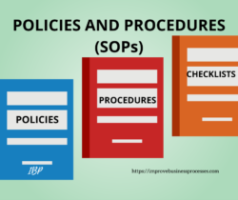Successful onboarding of new employees is an important process for every business, but it is especially important for small businesses.
Effective onboarding sets the tone for the employee’s entire experience with the company and can determine whether they will be a long-term asset or a short-term liability.
Unfortunately, many small businesses make common mistakes during the onboarding process that can undermine their effectiveness. In this article, we will discuss these mistakes and provide tips for avoiding them.
Why is New Employee Onboarding Important?
A good onboarding process can help new employees feel welcome and confident in their new roles.
It also helps them understand the company’s values, culture, and expectations while providing them with the tools they need to succeed in their new roles. Effective onboarding can even lead to increased job satisfaction, engagement, and retention.
However, getting onboarding wrong can have the opposite effect. If new hires do not feel valued or supported during the onboarding process, they may become disillusioned with the company before they even start their job.
This can lead to poor performance, low morale, and even turnover. That is why it is critical to get onboarding right, especially for small businesses that may have limited resources to invest in recruiting and training new employees.
Lack of Preparation Hinders Successful Onboarding of New Employees
One of the most common mistakes that small businesses make during the onboarding process is a lack of preparation. When businesses do not take the time to prepare adequately, they risk sending a message to new hires that they are not important, and that the company does not value their time or contributions.
Ways of Failing to Prepare for Effective Onboarding of New Employees
Small businesses may fail to prepare for onboarding in several ways. They may
- neglect to create a comprehensive onboarding plan that outlines the process and expectations for new hires. Having an onboarding checklist helps create consistency and ensures that you do not omit any important details.
- fail to gather necessary paperwork and documentation in advance, causing delays and frustration for new hires.
- neglect to set up new-hire workstations or
- provide the necessary tools and resources for success.
The Consequences of Lack of Preparation

The negative consequences of a lack of preparation during onboarding can be significant. New hires may feel unwelcome, unprepared, and unsupported, leading to low morale and decreased job satisfaction.
They may also experience confusion and frustration as they try to navigate the onboarding process without clear guidance or resources.
How to Prepare for Onboarding New Team Members
To avoid the mistake of a lack of preparation during onboarding, small businesses should create a detailed onboarding plan that outlines each step of the process, from pre-employment paperwork to job training and orientation.
This plan should include a timeline, a list of necessary materials and resources, and clear expectations for new hires.
In addition, businesses should prepare all necessary materials and documentation required for onboarding in advance, including employment contracts, tax forms, benefits information and core policies and procedures.
They should also ensure that new hire workstations are set up and ready to go, with all necessary software, equipment, and supplies in place.
By taking the time to prepare thoroughly for onboarding, small businesses can demonstrate to new hires that they are valued and respected and that their success is a top priority for the company.
This can lead to increased engagement, satisfaction, and retention among new hires, setting them up for success in their new roles.
Neglecting Company Culture
Company culture is a critical component of the work environment and sets the tone for employee attitudes and behaviors.

When small businesses fail to incorporate company culture into onboarding, they risk sending mixed messages to new hires and are unable to establish a strong cultural foundation for their workforce.
This can have negative consequences for new hires and the business as a whole.
Without a clear understanding of company culture, new hires may feel disconnected from their coworkers and struggle to integrate into the company’s work environment. They may also be unable to embrace the company’s values and mission.
How to Incorporate Company Culture
This involves a number of strategies, such as
- including culture-specific training as part of the onboarding process. For example, businesses may provide training on the company’s history, mission, and values, as well as the work environment, dress code, and communication norms.
- assigning a culture mentor to new hires. This mentor can help new hires navigate the cultural landscape of the business, answer questions, and provide guidance on how to fit in and succeed.
- incorporating culture-specific training and assigning culture mentors, businesses helps new hires feel more connected to their colleagues and the company’s values. This can lead to increased engagement, productivity, and long-term retention.
Overloading New Hires with Information
It is very common for small businesses to try to provide new hires with as much information as possible during the onboarding process.
However, overwhelming new hires with too much information too quickly can have negative consequences for their ability to effectively absorb and retain that information.
When new hires are overloaded with information, they may become overwhelmed and stressed, leading to decreased engagement and productivity.

They may also feel like they are not given enough time to fully understand the information provided, which can result in confusion and mistakes later on.
How to Stop Overload with Information
Break information down into manageable chunks. This could involve
- spreading out information over several sessions or days, rather than cramming it all into one day or orientation session.
- providing new hires with access to an onboarding platform that allows them to revisit information as needed.
- assigning a mentor or buddy to help new hires navigate the onboarding process, or
- providing access to resources such as online training materials or FAQs.
Overall, it is important for small businesses to strike a balance between providing enough information and overwhelming new hires.
By breaking information down into manageable chunks and providing ongoing support, businesses can ensure that new hires are able to effectively absorb and retain the information provided, leading to increased engagement, productivity, and success.
Not Providing Adequate Training
One of the most common mistakes small businesses make during the onboarding process is failing to provide adequate training. This can have negative consequences on job performance and employee morale, as new hires may feel unprepared and unsupported in their new roles.
When new hires receive inadequate training, they may struggle to understand their responsibilities, leading to mistakes and errors.
They may also become frustrated and demotivated, leading to low morale and high turnover rates. In contrast, providing effective training can lead to increased engagement, productivity, and job satisfaction.
To avoid this mistake, small businesses should provide effective training to new hires. This could involve using a mix of hands-on training and online resources, as well as offering ongoing training opportunities to support continuous learning and development.
Hands-on training can be particularly effective for new hires, as it allows them to learn by doing the work (by shadowing experienced employees) which helps them gain practical experience in their new role.
Managers Do Not Follow-Up
Small businesses often make the mistake of not following up during the onboarding process. While onboarding is typically focused on the first few days or weeks of a new hire’s employment, follow-up is critical for ensuring their long-term success and job satisfaction.
When small businesses fail to follow up with new hires, they may miss important opportunities to address concerns or provide additional support. This can lead to confusion and frustration, as new hires may feel neglected or unsupported.
To avoid this mistake, there should ensure follow-up during the onboarding process. This could involve scheduling regular check-ins with new hires to review their progress, answer any questions, and provide additional guidance or support.
It could also involve providing opportunities for feedback, such as surveys or open-door policies that allow new hires to share their thoughts and concerns.
By following up with new hires, small businesses can demonstrate their commitment to their success and help them feel more comfortable and engaged in their new roles. This can lead to increased job satisfaction, lower turnover rates, and overall business success.
Conclusion – Successful Onboarding of New Employees
Small businesses must avoid common mistakes when onboarding employees to ensure that they have a successful onboarding experience. This benefits the business in the long run as it increases employee retention – if it is properly done.
It is necessary to plan the onboarding process carefully, provide effective training, and ensure follow-up of new hires. These steps will help new hires feel supported, engaged, and ready to succeed in their new roles.
Use the tips provided in this post to improve your own onboarding processes. By doing so, you can attract and retain top talent, improve business operations, and build a strong and dedicated team.
For assistance, CONTACT US TODAY
References
SHRM (2023) – Understanding Employee Onboarding. https://www.shrm.org/resourcesandtools/tools-and-samples/toolkits/pages/understanding-employee-onboarding.aspx
Duggan, C. How to build an employee onboarding Process. https://resources.workable.com/tutorial/employee-onboarding

